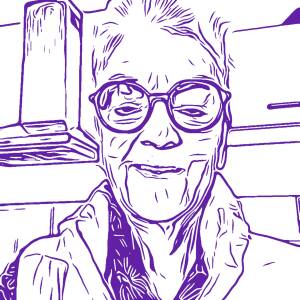A contemporary Guernseyman today...
And my windowsill plants. A very auspicious day yesterday; my plants had their first watering of the year! This morning my living creation log had a sprinkle and the air plants a 20 minute bath in warm water. Phew lockdown is energetic!
Today’s bit of history is modern day and I well remember all the TV coverage at the time. This is part of his obituary from Greenpeace...
Jonathan Castle (1950-2018)
Jon Castle first opened his eyes virtually at sea. He was born 7 December 1950 in Cobo Bay on the Channel Island of Guernsey. He grew up in a house known locally as Casa del Mare, the closest house on the island to the sea, the second son of Robert Breedlove Castle and Mary Constance Castle.
Young Jon Castle loved the sea and boats. He worked on De Ile de Serk, a cargo boat that supplied nearby Sark island, and he studied at the University of Southampton to become an officer in the Merchant Navy.
Jon became a beloved skipper of Greenpeace ships. He sailed on many campaigns and famously skippered two ships during Greenpeace’s action against Shell’s North Sea oil platform, Brent Spar. During his activist career, Jon spelt his name as “Castel” to avoid unwanted attention on his family.
Right and wrong
Jon had two personal obsessions: he loved books and world knowledge and was extremely well-read. He also loved sacred sites and spent personal holidays walking to stone circles, standing stones, and holy wells.
As a young man, Jon became acquainted with the Quaker tradition, drawn by their dedication to peace, civil rights, and direct social action. In 1977, when Greenpeace purchased their first ship – the Aberdeen trawler renamed, the Rainbow Warrior – Jon signed on as first mate, working with skipper Peter Bouquet and activists Susi Newborn, Denise Bell and Pete Wilkinson.
In 1978, Wilkinson and Castle learned of the British government dumping radioactive waste at sea in the deep ocean trench off the coast of Spain in the Sea of Biscay. In July, the Rainbow Warrior followed the British ship, Gem, south from the English coast, carrying a load of toxic, radioactive waste barrels. The now-famous confrontation during which the Gem crew dropped barrels onto a Greenpeace inflatable boat, ultimately changed maritime law and initiated a ban on toxic dumping at sea.
After being arrested by Spanish authorities, Castle and Bouquet staged a dramatic escape from La Coruńa harbour at night, without running lights, and returned the Greenpeace ship to action. Crew member Simone Hollander recalls, as the ship entered Dublin harbour in 1978, Jon cheerfully insisting that the entire crew help clean the ship’s bilges before going ashore, an action that not only built camaraderie among the crew, but showed a mariner’s respect for the ship itself. In 1979, they brought the ship to Amsterdam and participated in the first Greenpeace International meeting.
In 1980 Castle and the Rainbow Warrior crew confronted Norwegian and Spanish whaling ships, were again arrested by Spanish authorities, and brought into custody in the El Ferrol naval base.
The Rainbow Warrior remained in custody for five months, as the Spanish government demanded 10 million pesetas to compensate the whaling company. On the night of November 8, 1980, the Rainbow Warrior, with Castle at the helm, quietly escaped the naval base, through the North Atlantic, and into port in Jersey.
In 1995, Castle skippered the MV Greenpeace during the campaign against French nuclear testing in the Pacific and led a flotilla into New Zealand to replace the original Rainbow Warrior that French agents bombed in Auckland in 1985.
Over the years, Castle became legendary for his maritime skills, courage, compassion, commitment, and for his incorruptible integrity. “Environmentalism: That does not mean a lot to me,” he once said, “I am here because of what is right and wrong. Those words are good enough for me.”
https://www.greenpeace.org/international/story/14349/a-tribute-to-jon-castle/

Comments
Sign in or get an account to comment.


